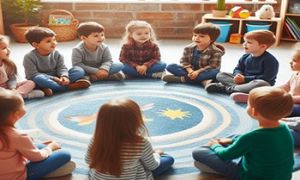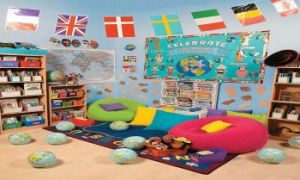Documentation is more than a compliance task; it’s a powerful tool for reflection, connection, and responsive programming. Yet with the increasing demands on educators’ time, it’s vital to reaffirm a core principle: educators are trusted professionals, capable of discerning which experiences are worth documenting and reflecting on.
What Does “Relevant” Mean?
Relevance isn’t about ticking boxes. It’s about identifying moments—planned or spontaneous—that offer insight into a child’s:
- Interests, strengths, and emerging skills
- Emotional well-being and relationships
- Cultural identity and authentic voice
- Learning dispositions and developmental needs
These moments might unfold during a structured activity, a spontaneous peer interaction, or a quiet moment of curiosity. The key is not the format, it’s the meaning.
The Role of Professional Judgement
Professional judgment is the educator’s compass. It guides decisions about:
- What to document: Not every moment needs recording. Educators can ask, “Does this experience deepen my understanding of the child or group?”
- How to reflect: Reflection might take the form of a learning story, a photo caption, a team discussion, or a child-led conversation.
- What comes next: Documentation should inform future planning, not just archive the past.
This approach honours educators as critical thinkers, not passive observers.
Linking to Future Learning
When documentation is intentional, it becomes a springboard for:
- Adjusting the educational program to meet evolving needs
- Scaffolding learning through targeted experiences
- Engaging families in meaningful dialogue
- Building emotionally intelligent, trauma-informed practice
What to Document and Reflect On
-
Start with the experience
Has something occurred—planned or spontaneous—that feels worth noticing? -
Ask: Is it meaningful?
Does the moment reveal something about:- The child’s interests, strengths, or needs
- Relationships, emotional well-being, or social development
- Emerging skills or learning dispositions
- Cultural identity, voice, or worldview
-
Check for relevance
Is the experience connected to:- Current learning goals or curriculum outcomes
- Group dynamics or the educational program
- Family engagement or community context
-
Consider the impact of documenting
Will recording this moment help:- Shape future planning or intentional teaching
- Spark reflective practice or team dialogue
- Strengthen child or family connection to learning
-
If yes to all above, document & reflect.
Use your preferred format (e.g., learning story, photo caption, child voice snippet).
Link to EYLF/MTOP outcomes and consider next steps. -
If unsure, use professional judgment.
You might choose to reflect privately, discuss with colleagues, or simply hold the moment in memory.
Not all meaningful experiences require formal documentation. -
If no, do not document
Celebrate the moment, but there's no need to record it.
Trust your insight and balance workload with impact.
In a sector built on relationships, trust, and emotional safety, documentation should feel empowering, not exhausting. By centering professional judgment, we restore dignity to the process and reaffirm what educators already know: they are the experts in their context.
Further Reading
Open-Ended Observations
Q: How Do I Write An Observation?
Simplified Observation & Planning Cycles
Q: How Do I Come Up With Extension Ideas During Observations
Observations in Childcare
Different Types Of Observation Methods
Anecdotal Records In Childcare
Q: What Is A Sociogram
Practical Examples Of Anecdotal Record Observation For Babies
Q: What Is A Narrative Observation
Event Sample Observations In Childcare
Q: What Is A Jotting Observation?
Jotting Observations In Childcare
Writing Observations For Babies




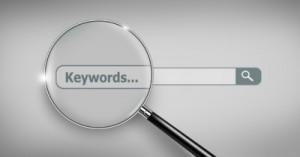
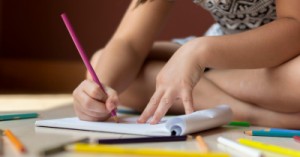
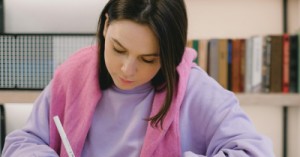
 Here is the list of the EYLF Learning Outcomes that you can use as a guide or reference for your documentation and planning. The EYLF
Here is the list of the EYLF Learning Outcomes that you can use as a guide or reference for your documentation and planning. The EYLF The EYLF is a guide which consists of Principles, Practices and 5 main Learning Outcomes along with each of their sub outcomes, based on identity,
The EYLF is a guide which consists of Principles, Practices and 5 main Learning Outcomes along with each of their sub outcomes, based on identity, This is a guide on How to Write a Learning Story. It provides information on What Is A Learning Story, Writing A Learning Story, Sample
This is a guide on How to Write a Learning Story. It provides information on What Is A Learning Story, Writing A Learning Story, Sample One of the most important types of documentation methods that educators needs to be familiar with are “observations”. Observations are crucial for all early childhood
One of the most important types of documentation methods that educators needs to be familiar with are “observations”. Observations are crucial for all early childhood To support children achieve learning outcomes from the EYLF Framework, the following list gives educators examples of how to promote children's learning in each individual
To support children achieve learning outcomes from the EYLF Framework, the following list gives educators examples of how to promote children's learning in each individual Reflective practice is learning from everyday situations and issues and concerns that arise which form part of our daily routine while working in an early
Reflective practice is learning from everyday situations and issues and concerns that arise which form part of our daily routine while working in an early Within Australia, Programming and Planning is reflected and supported by the Early Years Learning Framework. Educators within early childhood settings, use the EYLF to guide
Within Australia, Programming and Planning is reflected and supported by the Early Years Learning Framework. Educators within early childhood settings, use the EYLF to guide When observing children, it's important that we use a range of different observation methods from running records, learning stories to photographs and work samples. Using
When observing children, it's important that we use a range of different observation methods from running records, learning stories to photographs and work samples. Using This is a guide for educators on what to observe under each sub learning outcome from the EYLF Framework, when a child is engaged in
This is a guide for educators on what to observe under each sub learning outcome from the EYLF Framework, when a child is engaged in The Early Years Learning Framework describes the curriculum as “all the interactions, experiences, activities, routines and events, planned and unplanned, that occur in an environment
The Early Years Learning Framework describes the curriculum as “all the interactions, experiences, activities, routines and events, planned and unplanned, that occur in an environment
